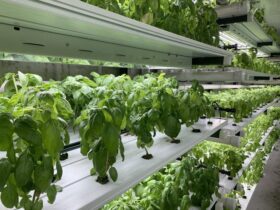Masonry walls are often considered permanent and durable but require routine maintenance to remain functional and attractive. If mortar joints are deteriorating, they should be repaired with a process known as tuckpointing.
Climate change is showing up in rising nighttime temperatures. This summer has had some of the highest lows Seattle has experienced in 130 years.
Schedule Regular Inspections
Masonry is tough, but even well-installed masonry can need repairs over time. Making regular inspections a part of your routine maintenance can catch issues like crumbling mortar, deteriorating brick, and roof leaks early, saving you from expensive repair costs down the road.
Frequently, owners of contemporary buildings undergoing masonry problems turn to unqualified roofing, waterproofing, or window cleaning companies to caulk holes and waterproof the structure, which isn’t likely to address the root cause of the problem. A qualified masonry Seattle contractor will conduct a general or detailed inspection to search for the underlying causes of the damage.
The inspection process also helps a mason identify the best method for correcting the problem, which will be determined by a building’s design and construction, including wall systems. Whether the masonry needs to be repointed, stabilized, replaced, or repaired, the right solution will save you money and protect your investment in your building for years to come.
Repair Cracks and Holes
Brick and stone structures are incredibly durable but still face much pressure from the elements. Cracks and holes in masonry can be a big problem for homeowners and building owners, but the good news is that these problems can often be repaired with time and effort.
Wide cracks in brick walls can be a serious structural issue, but cosmetic cracks less than 1/4″ deep are usually easy to repair. To fix these types of cracks, follow the steps below:
First, wet down the area with a garden hose. It helps improve the patch adhesion and removes dust and debris from the crack.
Mix equal parts of cement and sand in a bucket, and apply the paste mixture to the surface of the cracked area with a putty knife or trowel. Then, use a float or concrete-finishing trowel to level the patch and blend it with the surrounding surface of the wall.
Keep Your Chimney Clean
Masonry is an ancient construction technique that provides strength, durability, water protection, beauty, and insulation to homes. It is also eco-friendly because it reduces carbon emissions and atmospheric pollution.
Chimneys seem like rock-solid home fixtures that don’t require much maintenance but must be cleaned regularly. A chimney that isn’t cleaned correctly can quickly deteriorate. Soot can build up around the flue and chimney walls, clogging them and blocking airflow. The flammable soot can also leave black stains on nearby decor and furniture.
Over time, soot can morph into creosote flakes that are even more explosive than soot. Getting soot and creosote swept and relined regularly by qualified chimney professionals is essential.
Seattle’s wet climate can harm masonry by penetrating old mortar joints. These cracks can freeze and thaw, creating immense structural damage over time. Tuckpointing is an efficient way to repair deteriorating mortar joints and decrease water entry into brick structures.
Install a Waterproof Seal
Most people need to realize that brick or natural stone walls absorb water just like a sponge, and this becomes worse with age due to the mortar between the stones becoming more porous and voids forming. It is a significant reason why it is important to seal these structures every five years.
It will prevent moisture intrusion within the wall and protect against salt efflorescence, a powdery white surface on brick or masonry surfaces. It is caused by the water absorbing the salts in the masonry and migrating out of the structure when it evaporates. Although this is not a structural problem, it will cause discoloration to the surface of the building and can be challenging to remove with conventional cleaning methods.
There are a variety of different waterproofing products available for brick and masonry surfaces. Some produce a thin film on the surface; others penetrate deep into the material.










